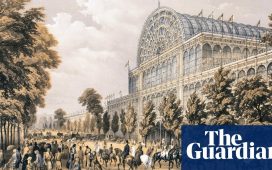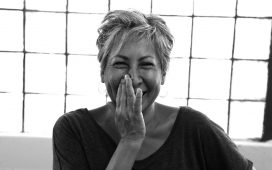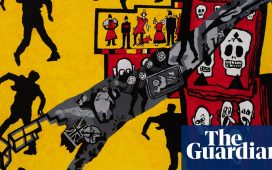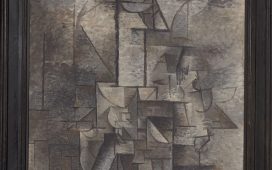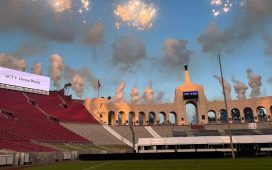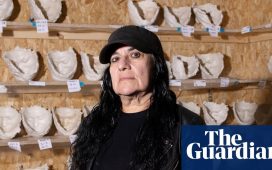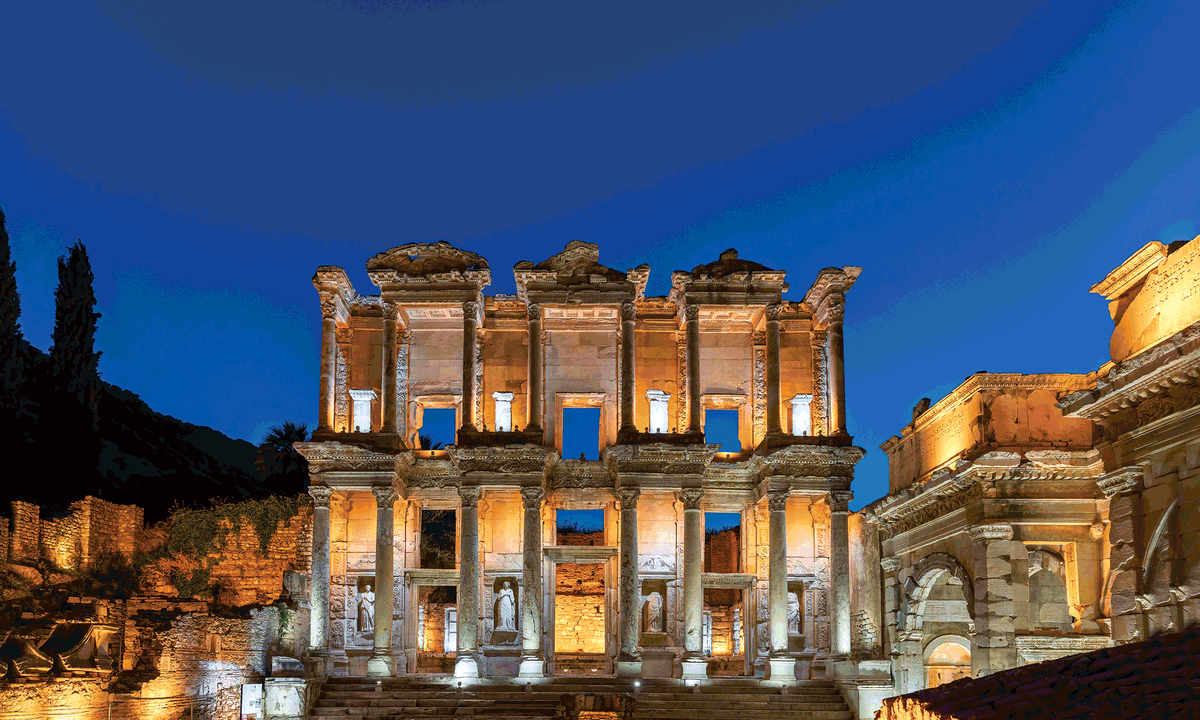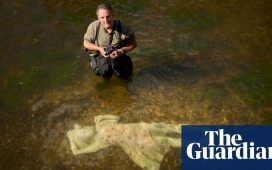Bernice Bing, the long-overlooked artist born in San Francisco’s Chinatown in 1936, has had a cult following largely concentrated on the West Coast for decades. While Bing’s contemporaries in the Bay Area art scene included artists like Joan Brown and Jay DeFeo, Bing’s art career never took off in the same way during her lifetime. On Thursday (12 September), Bing’s first solo show in New York opened at Berry Campbell, the Chelsea gallery founded by Christine A. Berry and and Martha Campbell in 2013.
Bernice Bing: BINGO (until 12 October) spotlights Bing’s work from 1961 until her death from cancer at age 62 in 1996, nearly the full span of her career. Bing’s market is stronger now than it ever was when she was alive. It’s part of a broader demand for work by the women associated with Abstract Expressionism, like Lynne Drexler and Grace Hartigan, themselves long written off as the wives and friends of more high-profile artists. The market for Drexler’s work in particular skyrocketed in 2022, with seven-figure results at auction.
“I feel like Bernice Bing is almost the next Lynne Drexler,” Berry says. “For a while, nobody knew who (Drexler) was. We were selling these paintings for very little money. And then her market exploded.” Berry Campbell announced the gallery’s representation of the Bing estate in April.
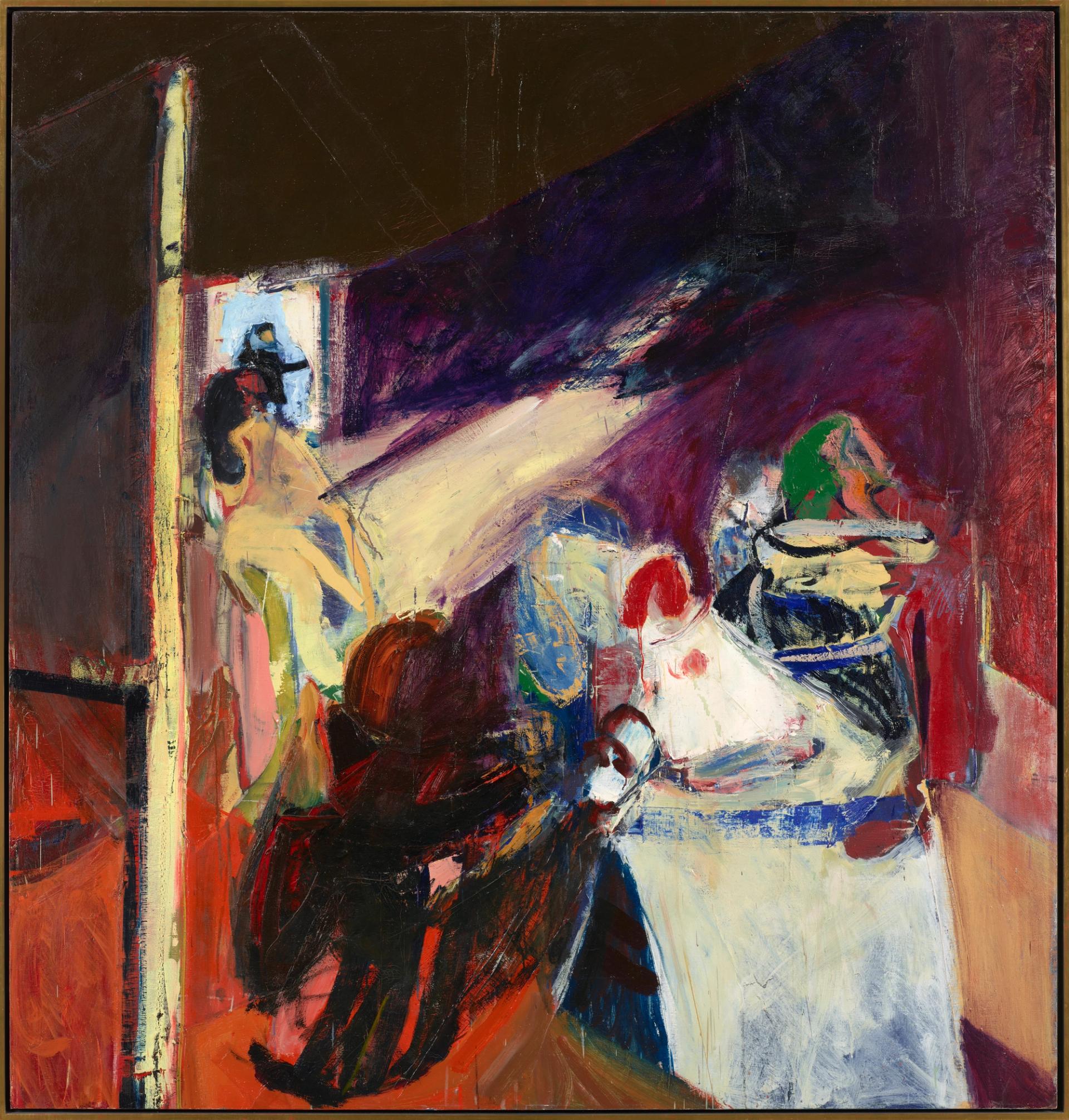
Bernice Bing, Velasquez Family No. II, 1961 Courtesy Berry Campbell, New York.
Being Asian American and a lesbian who grew up in foster care, Bing “did not fit the mould of what, at that time, you expected a famous, successful artist to be, and I’m sure that was difficult”, Berry says. “What moves me is that not only did she stay the course as a painter, but she found herself and her Chinese identity in her paintings.”
During the roughly three decades Bing worked as an artist, her style shifted dramatically as she explored different influences and aspects of her identity. Her early works share characteristics with her Abstract Expressionist contemporaries on the West Coast. But Bing struggled to afford to live in the city, and in 1963 left the Bay Area art scene for three years to become the caretaker of a vineyard near the Mayacamas mountains in Napa Valley, where her work often took on elements of the landscape and nature scenes.
In a 1963 journal entry, Bing wrote: “I, being a woman, Asian and lesbian in a white male system—Where do I start to recover my reality?” In 1984, Bing embarked on a trip to Korea, Japan and China, where she studied traditional Chinese calligraphy that she often incorporated into her practice, melded with abstraction. She was a practicing Buddhist by 1985, according to Berry Campbell.
“We really wanted to hit the high points of each period of her work, because her style changes,” Berry says of the new show. “When artists are not showing commercially all the time, they’re not bound to one style.”
Putting together a survey of Bing’s career was challenging and took several years because her work has been so dispersed since her death, Berry adds. In part because Bing was not married, when she died there was no streamlined “classic legacy of her estate going to an heir” like with other artists who had spouses or children, the dealer says.
“It’s hard to make art and store art, it’s an expensive project, and she never really had a lot of money,” Berry says. “Towards the end of her life, she was also sick and gave work to friends, to loan or to hold on to for her.”
Members of the Queer Cultural Center and the Asian American Women Artists Association in San Francisco banded together to preserve her legacy after her death, calling themselves “Team Bingo” after Bing’s childhood nickname. They found her will, and an old friend named Alexa Young inherited the estate.
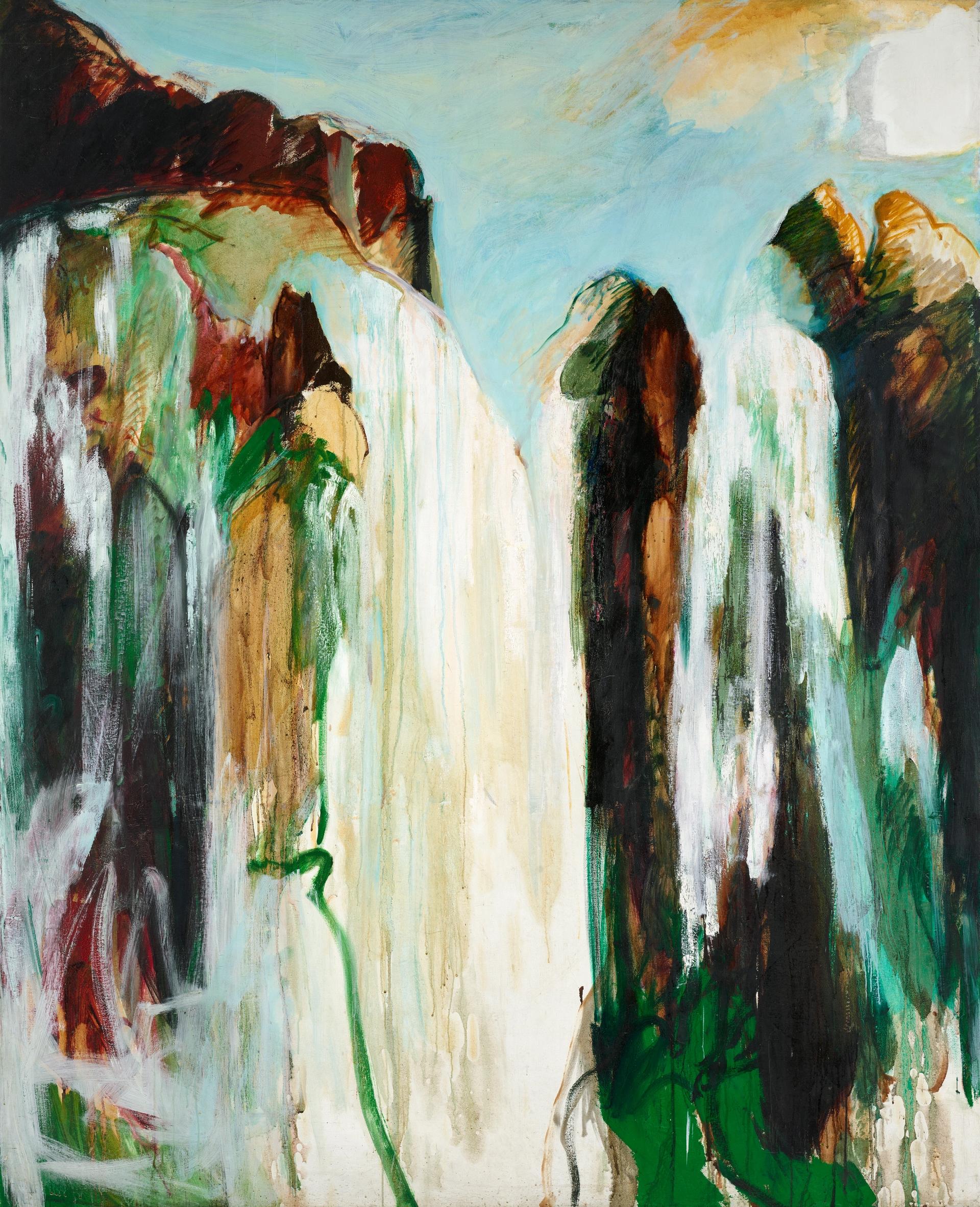
Bernice Bing, Burney Falls, 1980 Courtesy Berry Campbell, New York
Since then, demand for Bing’s work was driven largely by collectors interested in Abstract Expressionism and based on the West Coast, where her work is better known. In the mid-2010s, dealers there were selling her work for between $25,000 and $35,000, according to Berry Campbell. Bing’s market really began to take off after 2016, thanks in part to her inclusion in major museum exhibitions.
While her work wasn’t included in the show, she had a dedicated entry in the catalogue for the watershed Women of Abstract Expressionism exhibition at the Denver Art Museum that year, placing her among her contemporaries. (That show is also widely credited with electrifying the market of artists like Drexler and Hartigan). The Sonoma Valley Museum of Art staged Bing’s first retrospective in 2019, and three years later in 2022, the Asian Art Museum in San Francisco put her paintings, drawings and journals on display for the exhibition Into View: Bernice Bing. The museum had acquired 24 works from the Bing estate, some gifted and some purchased.
Bing’s auction record was set in March, when an untitled work from 1961 sold for $102,100 with fees at Bonhams Los Angeles’s post-war and contemporary art sale, doubling the painting’s high estimate of $50,000. The work had been acquired directly from the artist by a San Fransisco collector and then passed down by descent until it was consigned, according to the auction house. But some of Bing’s major works have fetched low- to mid-six figure prices on the private market for several years.
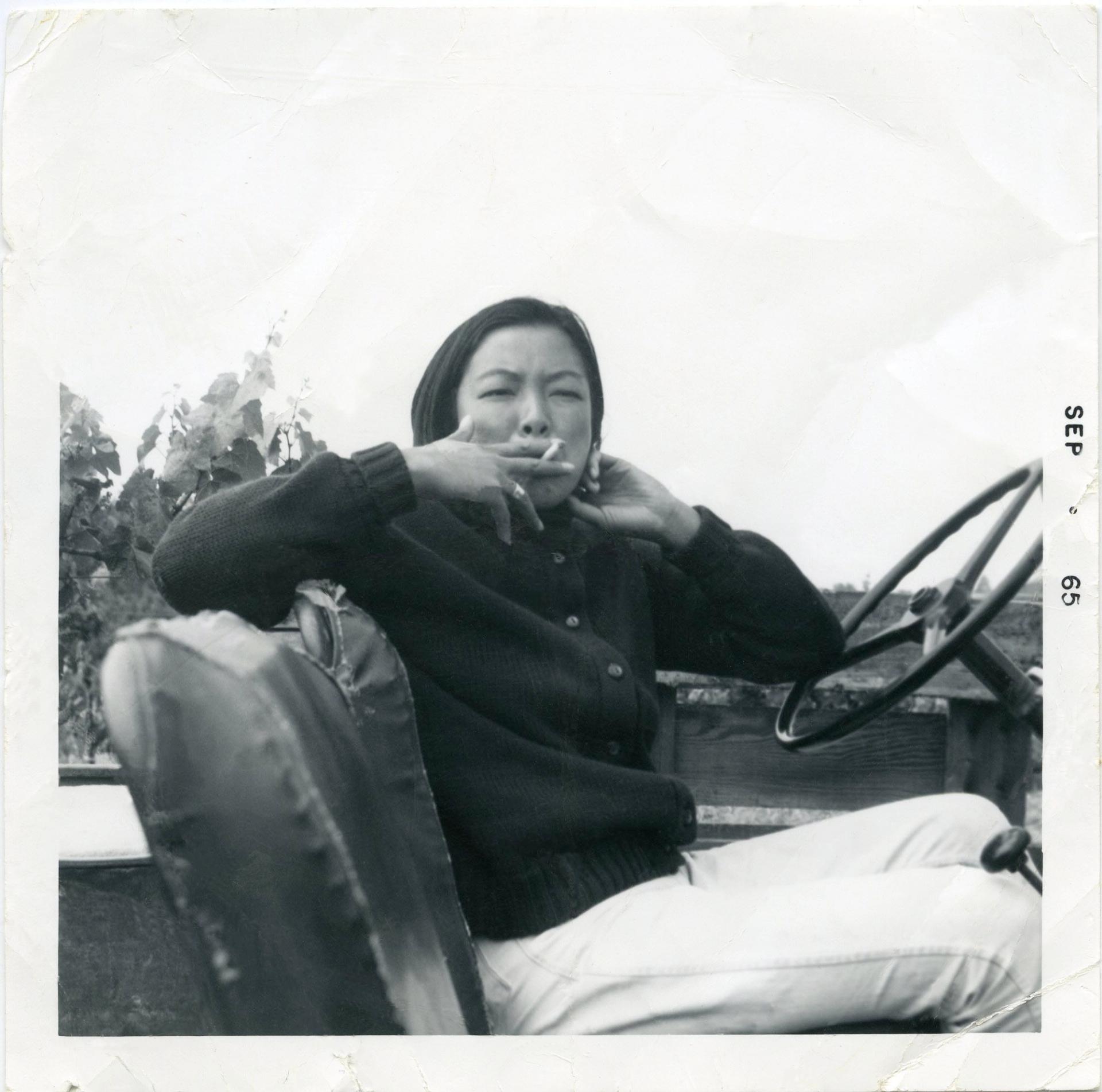
Berenice Bing. Courtesy the Bing estate
“You’re not going to find her paintings just anywhere. They’re not popping up at auction every other sale. They’re just very difficult to find. And what has come up has been sort of minor, all of it,” Berry says.
Price points for Bing’s major works at the Berry Campbell exhibition range from $300,000 up to $850,000, the dealer says. Burney Falls (1980) is likely one of the largest paintings Bing ever made, Berry adds, and once hung in Bing’s office at the South of Market Cultural Center, where she worked as the group’s executive director. It is priced at $850,000.
Velasquez Family No. II (1961) is one of Bing’s earlier works and part of a series of paintings inspired by Baroque artist Diego Velázquez’s Las Meninas (1656) that Bing completed for a solo show at the Batman Gallery, an alternative art space in San Francisco that was in operation for only about five years. It’s a “museum-quality” work priced at $700,000, Berry says. The show also includes a series of works on paper ranging in price from $16,000 to $35,000, mostly landscapes from Bing’s time in the vineyard.
Berry Campbell has released an 80-page catalogue for the show, after initially aiming to produce one only half that size. During research, the gallery found there was more information they wanted visitors to know about Bing and her life.
“We know that Bernice Bing is important, and now we have to share that with the world,” Berry says. “People need to know that she was on the scene painting. She was actively part of the San Francisco Bay Area painters, and she deserved to have a show in New York then. And so if not then, then we’ll do it now.”
